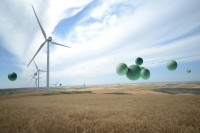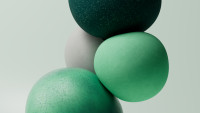Brand Resilience Index: Germany's most resilient brands

Resilient brands adapt quickly, act with foresight and yet remain true to their identity. This enables them to survive in times of crisis, even in volatile markets, and sometimes even emerge stronger from economic turmoil.
But how must a brand be positioned in order to remain stable even in times of crisis? We examine this with the ‘Brand Resilience Index – Germany's Most Resilient Brands’. Based on comprehensive data from the Brand Asset Valuator (BAV), the diffferent team calculated brand resilience, i.e. the proven resilience of a brand in times of crisis.
Almost every second brand suffers in crises
Resilient brands adapt quickly, act with foresight and yet remain true to their identity. This enables them to survive in times of crisis, even in volatile markets, and sometimes even emerge stronger from economic turmoil.
But how must a brand be positioned in order to remain stable even in times of crisis? We examine this with the ‘Brand Resilience Index – Germany's Most Resilient Brands’. Based on comprehensive data from the Brand Asset Valuator (BAV), the diffferent team calculated brand resilience, i.e. the proven resilience of a brand in times of crisis.
The most resilient German brands
It comes as no surprise that Tempo (brand resilience score: 91.6%) tops the list of the 50 most resilient brands in Germany, scoring highly in all of the above resilience drivers. Samsung (85.0%) and Nivea (84.0%) follow in second and third place. Coca-Cola (78.5%) and Miele (75.4%) also hold their own in this ranking, completing the top five most resilient brands.
A look at the different industries reveals a similar picture: where functional necessity meets emotional anchoring, brands are more crisis-proof. The ‘Home and Garden’ category leads the ranking of industries with the most resilient brands. The other places are occupied by tools & household appliances, household goods, toys and computers/electronics.
‘Resilient brands are like bamboo in a storm: deeply rooted and steadfast, but at the same time flexible enough to yield to even strong winds without breaking,’ sums up Pasquale Semonella, Practice Lead for Brand Management at diffferent.
Brand managers whose brands are not among the top 50 listed in the study can request information from the study initiators about where their brand stands, which factors influence price and volume resilience, and what specific steps can be taken to strengthen resilience in a targeted manner.
The methodology: Brand Asset Valuator as a basis
The basis for diffferent's research is WPP's Brand Asset Valuator (BAV), one of the largest and longest-running brand studies worldwide. In collaboration with leading academic partners – including Columbia Business School, London Business School, Tuck School of Business at Dartmouth, Haas School of Business at the University of California/Berkeley, and Michigan Ross School of Business – BAV has developed a methodology to analyse extensive brand data from 52 countries. The scientifically based evaluation model developed by diffferent captures both quantitative and qualitative aspects of brand resilience.
For the Brand Resilience Index Germany, we focused exclusively on German brand values. Five key crises – including the financial crisis, the COVID-19 pandemic, the inflation crisis and the current geopolitical upheavals – were examined at an international level, as these global events had a significant impact on the economy and society in Germany.
Overall, the results for the German market are based on the evaluation of more than 1,000 brands.
Jasmin Seitel, Business Partner Brand Management at diffferent, is available for discussions, interviews and queries relating to the study.
In addition to Jasmin Seitel, Pasquale Semonella, Georg Masopust and Reha Yildrimmann are also part of the team responsible for the study at diffferent.
Download the study here
You can download the complete study results here free of charge. (DE)


